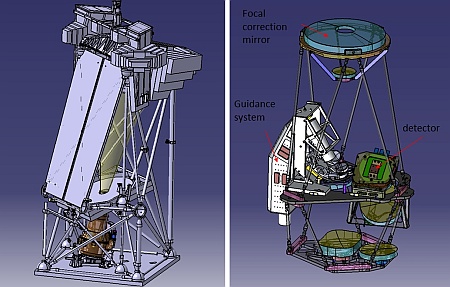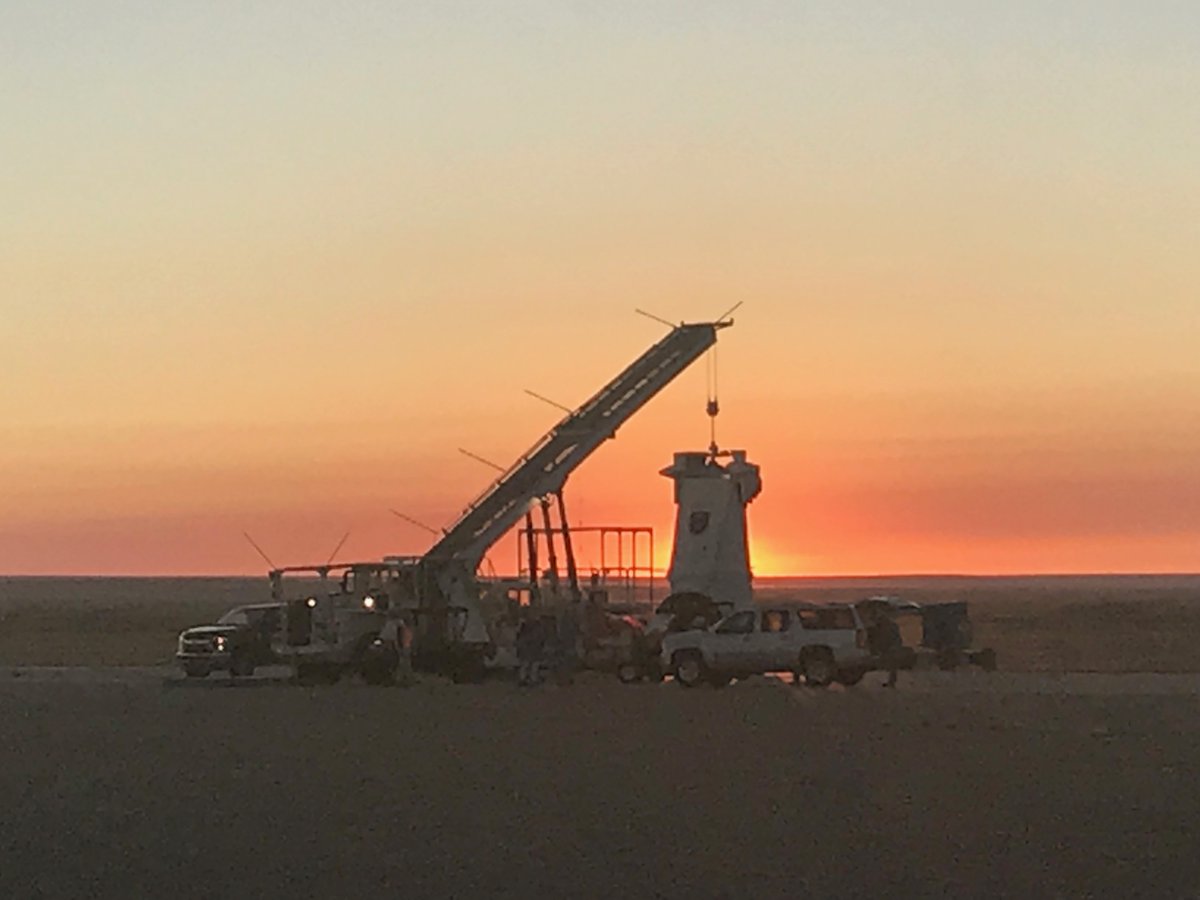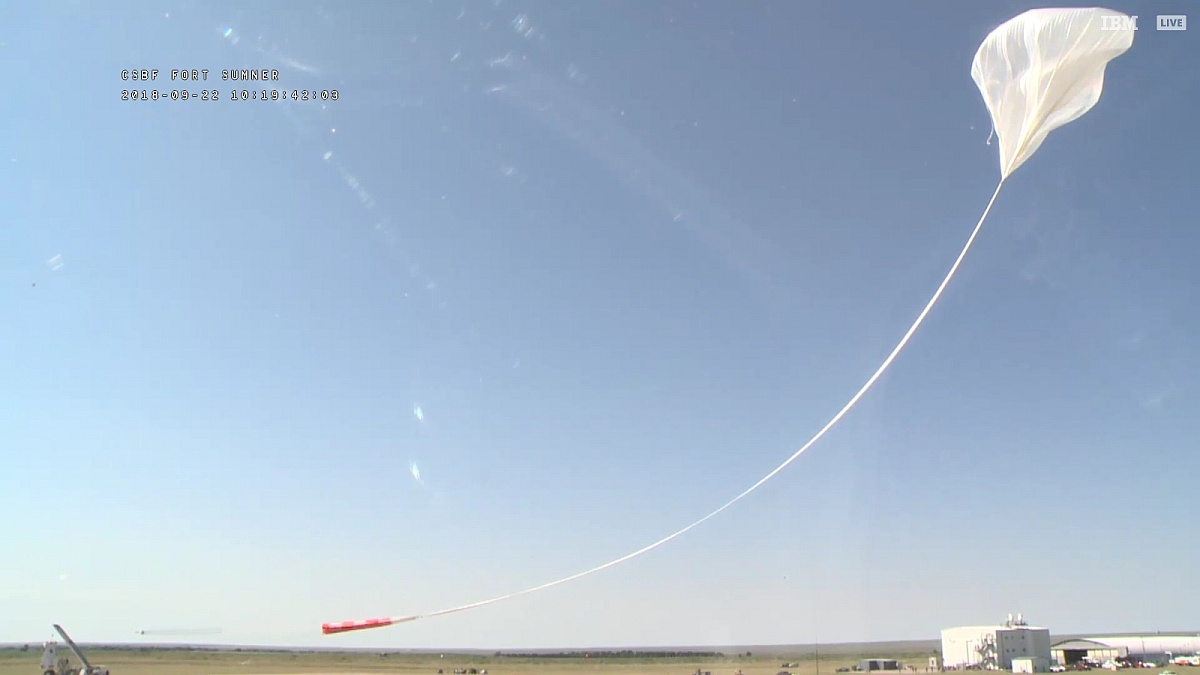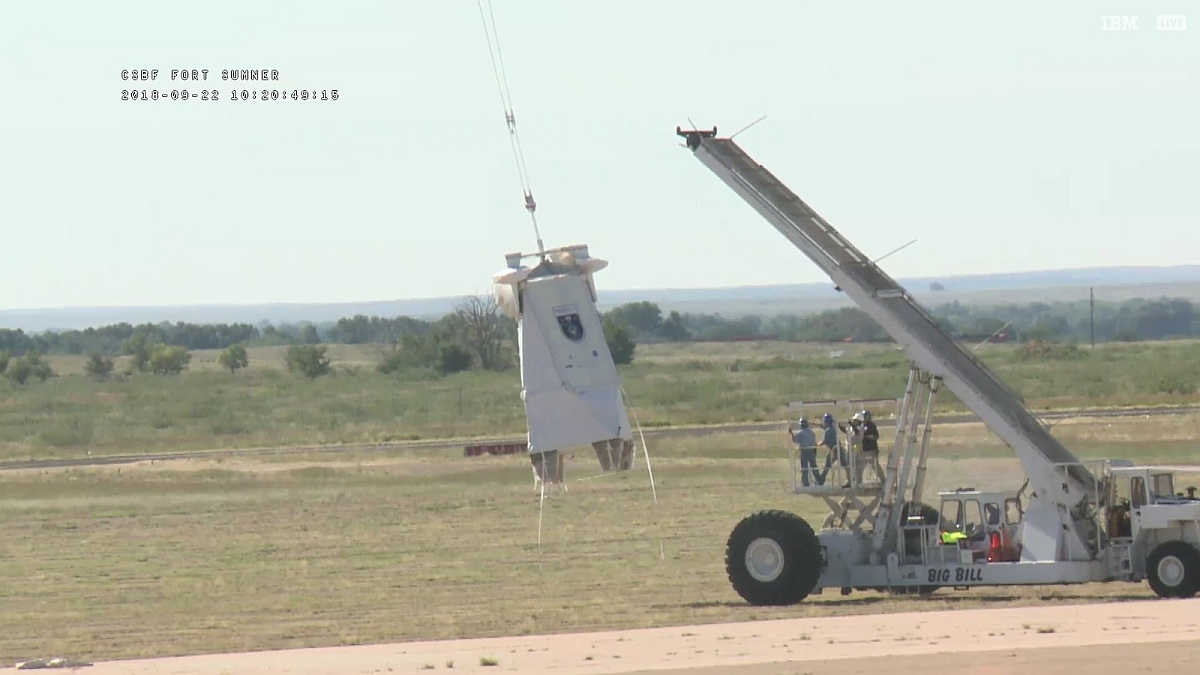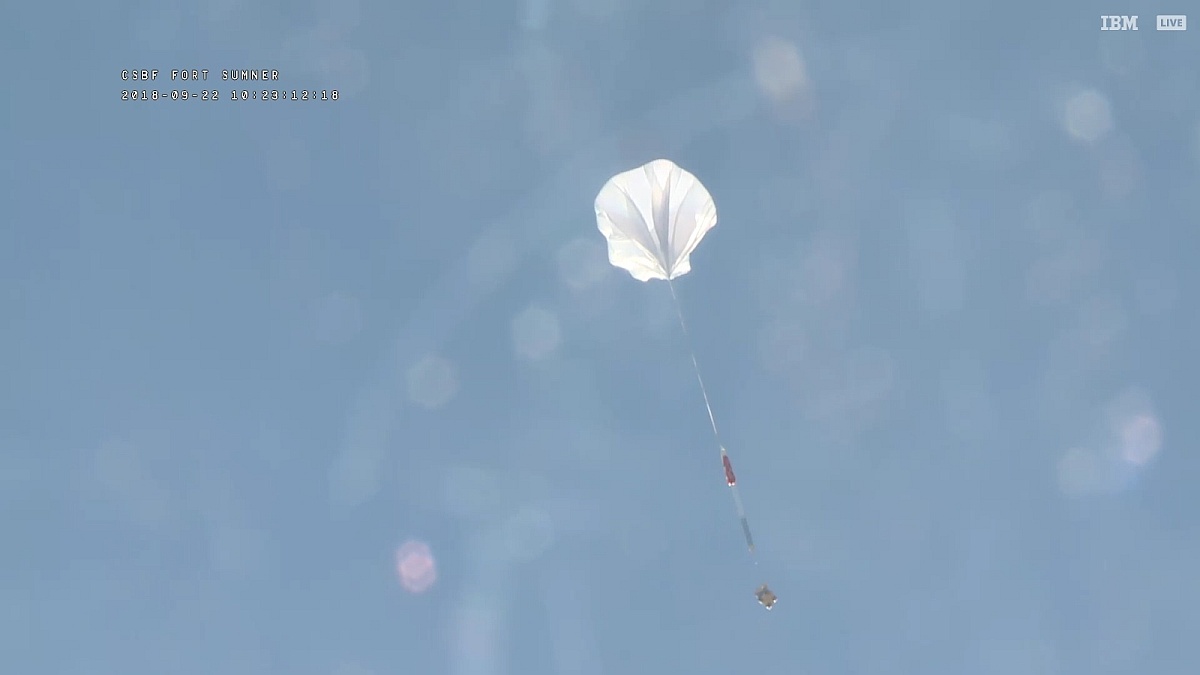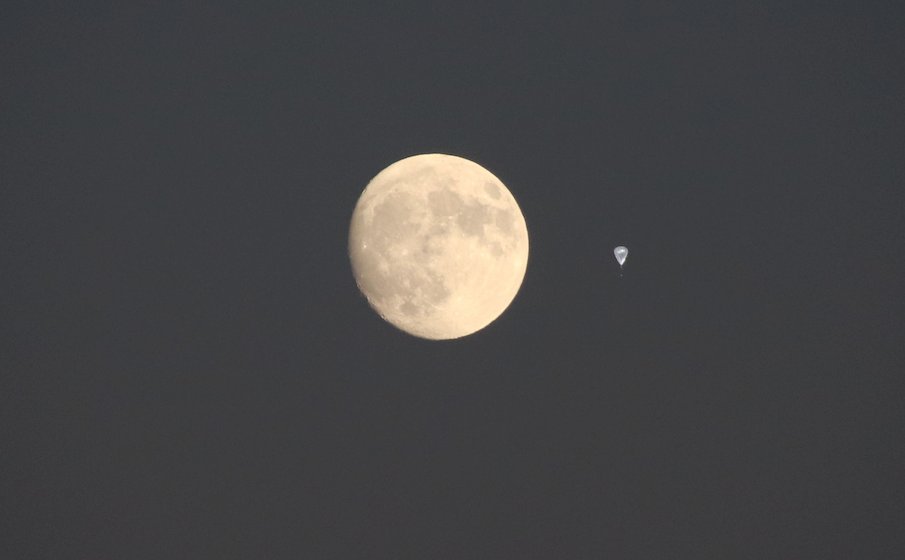Purpose of the flight and payload description
Is an instrument created to detect and map emission from the Intergalactic Medium (IGM) at redshifts between 0.3 and 0.9. As IGM emission is faint and extended, and often much fainter than the foreground diffuse emission it is only detected by an instrument optimized for low surface brightness, widefield emission-line surveys in the presence of time and spatially variable diffuse foregrounds.
The FIREBALL experiment is comprised of three major subcomponents: the telescope, the spectrograph, and the gondola.
The telescope is a 1 meter diameter f/20 Classical Cassegrain with image quality requirement modest, in the order of 3-4 arcseconds. The secondary mirror mount provides active focus control, fine guiding, and periodic 1-10 arcminute chopping for on/off-source/background measurements by mean of three precision vacuum grade actuators. The incoming light passes through the telescope and first strikes a dichroic beam splitter which sends light of the primary wavelength to the high resolution spectrograph. The balance of the light (visible) goes to a guider system while a calibration lamp injects light into the system via the dichroic backside, with line spectra and flat field illumination using a diffuser.
The spectrograph is a fiber fed design, using approximately 400 fibers, each with a 100micron core. The fibers are optimized for UV transmission, ideal for the wavelength range (190nm-210nm) of the experiment. The sky coverage is approximately 2.6 arcmin on a side. This allows for 400 individual spectra to be taken of each point on the sky and then for reconstruction of the 3d structure over X, Y, and redshift. The spectrograph design is based on a holographic reflection grating and a compact single mirror system. A micro-channel plate NUV (similar to that used in the GALEX satellite experiment) is used as detector.
The FIREBALL gondola design is based off the French FOCA experiment -also devoted to UV research- which delivered an inflight pointing jitter of 2 arcseconds rms. The design uses a two-stage tracking concept. The housing of the gondola is passively and actively damped and is stabilized azimuthally to provide a reference platform for the second stage tracking.
In the second stage, the gimbaled telescope actuates with two degrees of freedom, elevation and cross-elevation. The gondola is azimuthally stabilized with a motorized suspension bearing. Gyros on the gondola provide velocity reference and a three-axis magnetometer provides the azimuth angle. The motorized bearing is torque limited and provides a viscous friction that damps torsional oscillations. Pendulum oscillations of the gondola platform are damped by a smaller 30 pound pendulum immersed in oil and mounted onto the gondola. The pendulations are also actively damped with angular momemtum coupled to the gondola. With these active and passive controls, the gondola achieves 2-4 arcminutes stability. The second stage controls the telescope and instrument with elevation and cross-elevation motors. The motor drive signal takes input from two sources.
Gyro sensors on the gondola feed forward the rate of large velocity perturbations at the gondola. Final fine corrections to the motor output come from a quadrant star sensor.
Details of the balloon flight
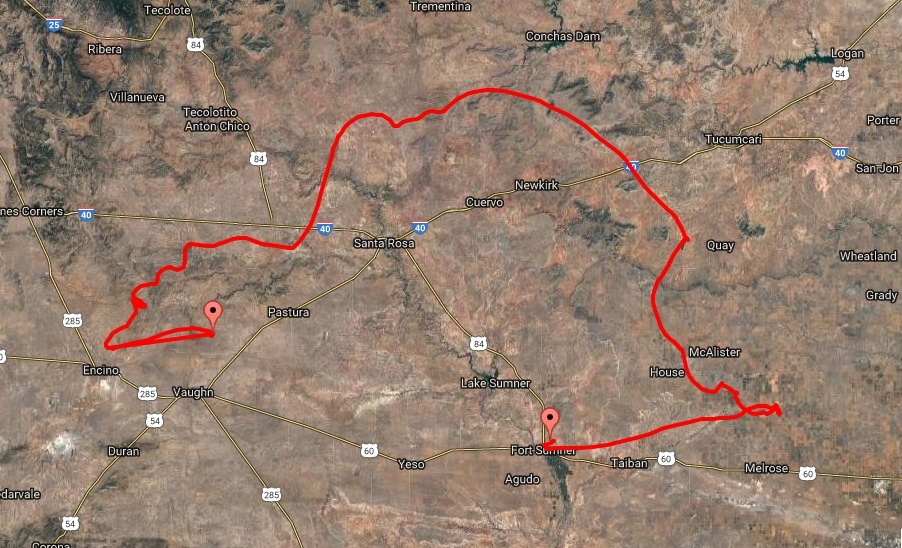
Balloon launched on: 9/22/2018 at 16:20 utc
Launch site: Scientific Flight Balloon Facility, Fort Sumner, (NM), US
Balloon launched by: Columbia Scientific Balloon Facility (CSBF)
Balloon manufacturer/size/composition: Zero Pressure Balloon
Flight identification number: 690N
End of flight (L for landing time, W for last contact, otherwise termination time): 9/23/2018 at 7:04 utc
Balloon flight duration (F: time at float only, otherwise total flight time in d:days / h:hours or m:minutes - ): 15 h 23 m
Landing site: North of Vaughan, New Mexico, USA
Originally this flight was planned to be performed during the 2017 fall launch campaign of NASA balloon program in Ft. Sumner, but due to the extremely uncooperative weather that season it's flight was delayed to the next year. Instead of sending it back to France it was left in storage at Ft. Sumner base.
In 2018 the instrument was prepared during July and August and was launched at the first attempt on September 22. The balloon was successfully released using the dynamic method, at 16:20 UTC and after a slow climb it reached float altitude of 126.000 ft at 19:20 utc. During all the flight the balloon followed a typical "turnaround" pattern with a minimal displacement from the launch site. At left we can see a map of the flight path (click to enlarge).
Separation of the payload ocurred at 7:04 UTC on September 23 with landing north of Vaughn, New Mexico, less than 50 miles from the launch site. Total flight time was about 15 hours and 23 minutes.
This was the third flight of the instrument.
External references
- FIREBALL website at Caltech
- Fireball Website at CNES
- Fireball Website at Laboratoire d'Astrophysique de Marseille
- Balloon-borne FIREBall-2 ultraviolet spectrograph stray light control based on nonsequential reverse modeling of on-sky data Journal of Astronomical Telescopes, Instruments, and Systems, Vol. 8, Issue 4, 048001 (November 2022)
- Modeling of stratospheric balloons and robust line-of-sight pointing control CEAS Space Journal, Volume 16, Issue 4, p.457
14653If you consider this website interesting or useful, you can help me to keep it up and running with a small donation to cover the operational costs. Just the equivalent of the price of a cup of coffee helps a lot.

